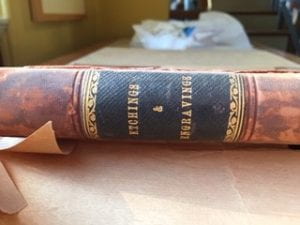Call for proposals – Family Activities in the Museums
By Helen Carney, on 24 March 2022
UCL Culture are seeking proposals from artists, facilitators, and creative practitioners for fun and inspiring family activities to be developed and delivered in our museums and cultural spaces. Building on the success of past workshops, self-led activities and other family focused-activities, we are looking for proposals that fit with our themes and explore our collections in new and innovative ways.
We are looking for proposals for activity that can be delivered in the Grant Museum of Zoology and the Petrie Museum of Egyptian Archaeology.
Workshop format
- Workshops must be family-friendly, supporting groups of mixed ages and abilities to work together to make, explore, create and move through our spaces
- Proposals can be for drop-in workshops, durational workshops or set timed events/performances
- Proposals should consider the museums as a space for mixed audiences, with families taking part in a space with other visitors
- Proposals must be suitable for delivery in the museum, but may also consider options for further reach through digital delivery
- Proposals can include a range of materials, but must be mainly ‘dry’ and suitable for a space that is use for collections display or handling (no pastels, paint or charcoal)
- For the Grant Museum workshops will need to be adapted to be deliverable for both an early opening for Family Members (10am-11am) and during public opening times (after 11am)
Dates
Workshops will be scheduled for Saturdays across 2022-23.
Confirmed dates for Grant Museum workshops are 30 April, 28 May, 25 June, 30 July, 27 Aug, 24 Sept, 30 Oct and 26 Nov. Dates for Petrie Museum workshops are tbc.
UCL Culture Themes
The Petrie Museum of Egyptian and Sudanese Archaeology houses just over 80,600 objects relating to life and death along the Nile Valley, making it one of the largest collections of Egyptian and Sudanese archaeology in the world. It includes many world ‘firsts’ such as the Tarkhan dress, the oldest known, most complete garment in the world.
The Grant Museum of Zoology has around 68,000 zoological specimens, including the world’s rarest skeleton, the quagga; thylacine specimens; dodo bones and a fine collection of models.
Our programmes and exhibitions explore themes relating to:
- Power & social justice
- Biodiversity, climate justice
- Research related to issues that reflect UCL’s impact locally, nationally and globally
There are also specific themes we are interested in exploring in connection to each museum.
- New entrance gallery in the Petrie (and accompanying family trail release date tbc) connected to hidden characters behind the collection
- Activities that make use of 3D printed replicas and digital images from the collection
- Activity that brings the Grant Museum’s micrarium to life
- Activity that explores the themes of Displays of Power (past exhibition in the Grant Museum)
Examples of recent activity
Family Yoga
An inclusive yoga session drawing inspiration from the incredible specimens on display in the Museum, inviting families to pause, move, breath, and look at the collections in new ways.
https://www.ucl.ac.uk/culture/whats-on/family-event-family-yoga-grant-museum
Puppet Making
This workshop invited families to explore extinction and survival, looking at why extinction has happened, and how we can prevent further extinction of species due to climate change.
https://www.ucl.ac.uk/culture/whats-on/design-and-make-your-own-puppet-animal
Hidden Histories
Map and gallery exploration activity tracing the journeys of some of our animal specimens to discover more about their origins and stories overseas.
https://www.ucl.ac.uk/culture/whats-on/hidden-histories-grant-museum
Fee
The base fee for workshop delivery is £200 to cover up to four hours of activity, with additional budget for materials. Additional preparation time can be agreed, depending on the nature of the proposal, its link to the museum displays and the required devising time. Please given an indication of this your proposal.
Next steps
Proposals of no more than one A4 page should be sent to museums@ucl.ac.uk by 18.00 on Friday 22 April.
 Close
Close






